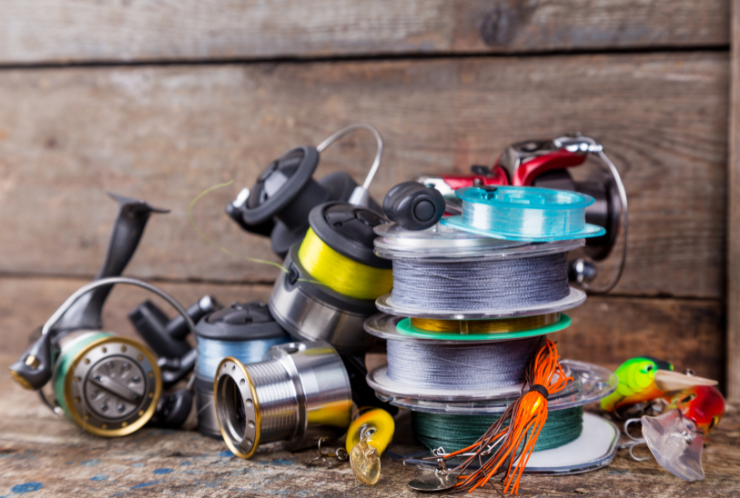
Posted by
Fishing is one of the best activities in Southwest Florida, and with so many beautiful spots, the area is a top destination for many anglers. But while we have such a desirable location, you cannot accomplish anything without the right equipment. There is no doubt that you need a fishing rod, but the fishing line is equally important. So, what are the different fishing line types, and how do you choose the right one?
In search of the best fishing line for your next trip? The three most common fishing line types are monofilament, braided, and fluorocarbon. Throughout this article, we will cover the details of which line is best for inshore and offshore fishing, the winner for saltwater and freshwater fishing, how color affects performance, and plenty of other helpful information for your next fishing adventure.
What Are the Three Main Types of Fishing Line?
Anglers have three main options when it comes to fishing lines. They include monofilament lines, braided lines, and fluorocarbon lines. Depending on their unique characteristics, they are most effective for different fishing methods, tactics, and conditions. Due to the variety of options available on the market, finding the right fishing line can seem challenging, but it’s actually quite simple once you determine the type of fishing you will do. Now let’s go over some details.
Monofilament
This type of line, also known as mono, is composed of just one plastic fiber, most commonly nylon, and has been around for generations. Considering how easily this product is manufactured, it has led to a lengthy history dating back to the 1930s.
Some benefits of using monofilament lines are their affordability, abundance of availability, and ease of use. Due to its flexibility and stretch, you can use mono on most fishing adventures. Additionally, the material has good elasticity under pressure, reducing the likelihood that the hook will tear through a fish’s mouth, making it easy for the fish to escape. Mono also has a slow sink rate, which is ideal for topwater lures since it does not accelerate the bat’s descent.
You can also choose various colors because it is much easier to tint mono than other types of lines. You can pick less visible shades, such as green, clear, or blue, or choose to go with colors of contrast to help you watch the lines. Some even change tones when they go underwater. In addition, monofilament lines are among the most affordable ones, giving you plenty of opportunities to catch fish without breaking the bank.
While there are a lot of benefits when using mono lines, there are also some drawbacks. For instance, prolonged exposure to UV light degrades them, which means you’ll have to replace them more often. Also, compared to braided lines, they are not as responsive, so casts do not travel as far.
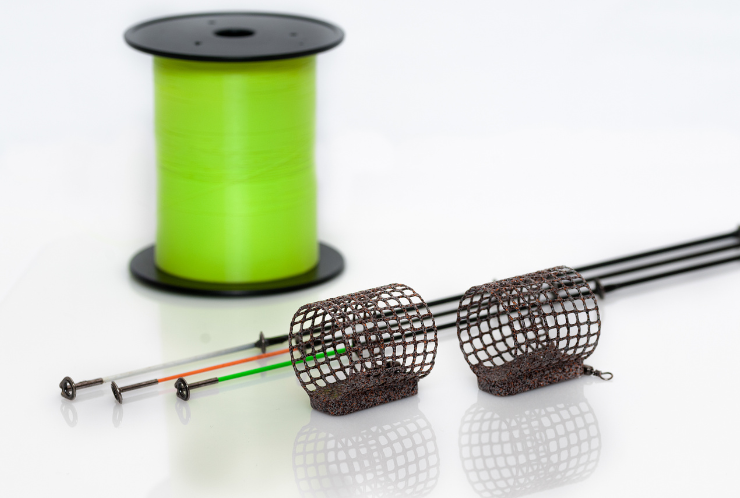
Braided
Braided fishing lines have become very popular in recent years and are a significant part of the fishing equipment for most anglers. They are often made of several synthetic fibers, including Dacron, Micro-Dyneema, or Spectron, giving them incredible strength. As a result of their structure, they cost more than monofilament lines, but that also means that they won’t need to be replaced as frequently. In addition, braided lines are tough, resistant, and have no stretch, making them ideal when fishing in dense vegetation or deep waters.
Although the lack of stretch is an advantage in some fishing scenarios, it also has disadvantages when battling for a more robust catch, such as swordfish. If you’re aiming for a heavier catch, the strength of the fish can easily cause the line to snap, resulting in damage to the rig and the creature.
If you plan on only catching and releasing your fish, do not use braided lines as they are more likely to cause injury to the fish. Another drawback is that the braided fishing line can be seen underwater, which can be challenging if you intend to fish in clear water.
Fluorocarbon
This fishing line has only one strand and is made up of fluorine, carbon, and chlorine. Some of the reasons why fluorocarbon lines are so popular with anglers are that they are nearly invisible under the surface, which is ideal for catching fish that are timid or skeptical. Fluorocarbon fishing lines are also more resistant to abrasion, which means they will perform better with reefs, teeth, and scales. It’s also heavier than other fishing lines, so it’s suitable for bottom fishing.
Some disadvantages of fluorocarbon fishing lines are that they are not as flexible, often fail at knots, and are pricier.
Learning about different fishing lines is just one component of all the fun you can have. You must, however, have all the equipment you need for a successful trip and know where the best inshore fishing spots are.
What Is the Difference between Monofilament and Fluorocarbon?
The significant difference between monofilament and fluorocarbon lines lies in their composition. Monofilament lines consist of nylon, while fluorocarbons have fluorine.
Another difference is that the fluorocarbon fishing line is nearly invisible and has excellent strength and durability, while the monofilament deteriorates much more quickly.
In addition, it is well known to most anglers that monofilament lines have quite a bit of flexibility – if you only take both ends of your leader and pull, you will be amazed at how far it stretches, but this isn’t always a good thing. While having some stretch could benefit you by absorbing the shock while battling with your catch, less stretch would result in a higher degree of sensitivity for spotting subtle movements.
Fluorocarbon has many advantages over monofilament, but monofilament is generally more affordable than fluorocarbon. Take into account your situation before making a purchase. Now that we know the difference between monofilament and fluorocarbon lines, how about catching some bass in Southwest Florida?
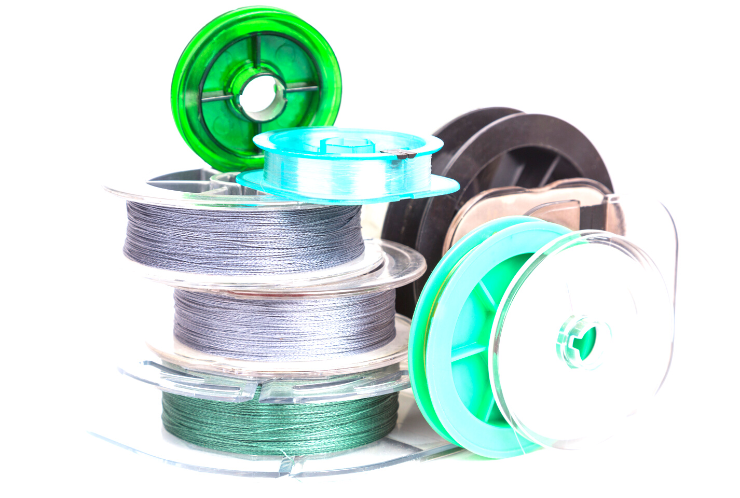
What Type of Line Is Best for Saltwater Fishing?
As you prepare for your fishing adventure, whether it is for the highly sought-after snook or something else, it is essential to plan accordingly. Think about what kind of fish you hope to catch, whether you will be bottom or topwater fishing, and what type of fishing line you should use.
If you plan on using a monofilament line for saltwater fishing, keep in mind that although it’s durable and relatively cheap, prolonged exposure to sunlight and salt water will degrade its quality, making it necessary to replace it more frequently than a fluoro or braid.
However, if you plan to catch a fish like a tuna, mono is the best choice due to its ability to withstand sudden changes in direction and great depths during battle. A fluorocarbon line will do great in a saltwater area where fish are plentiful, as its near invisibility will cause them to become confused, making it easier to catch them.
In addition, since fluoro only stretches a limited amount, it is ideal for bottom feeders like flounders. Another option for saltwater fishing is a braided line, which is virtually indestructible. Still, one downside is that you can easily miss a fish within seconds if it starts thrashing or leaping. Braided line is ideal for surf fishing, as it can withstand tides and beatings from the bottom.
What Is the Best Type of Line for Freshwater Fishing?
We learned that choosing the right line is crucial to a successful fishing trip. Because this is the only direct link between anglers and fish, picking the wrong line can cause a lot of missed opportunities and disappointment.
While you can use mono, fluorocarbon, and braided types for your freshwater fishing, it comes down to the scenario or the fish you are targeting.
Mono lines are invisible, durable, and shine when you’re after big fish like snook in the Caloosahatchee river (remember, it’s catching and releasing fish in Southwest Florida). In addition, it’s also versatile and stretchy, which makes it shock resistant and ideal for lakes. Some drawbacks would be that, being stretchy, you might not feel the bite (thus not perfect for smaller fish), and it’s not suitable for bottom feeders. It’s also a bit heavier and loses its strength after prolonged exposure to the sun.
You should consider using braided lines if you’re fishing in hard-to-reach places, bushes, or overall heavy cover. It’s susceptible, and you will feel the slightest bite. It’s also sturdy and durable, and it prevents knots. The main drawback of the braided line is that it is visible and not ideal for clear waters. The fluorocarbon line is your best bet for fly fishing and catching trout. It’s strong, thin, non-abrasive, and not visible, making it ideal for clear water. It also sinks fast, so it’s perfect for catching bottom feeders. Some drawbacks include that it bends and curls and is stiff, making it harder to reel.
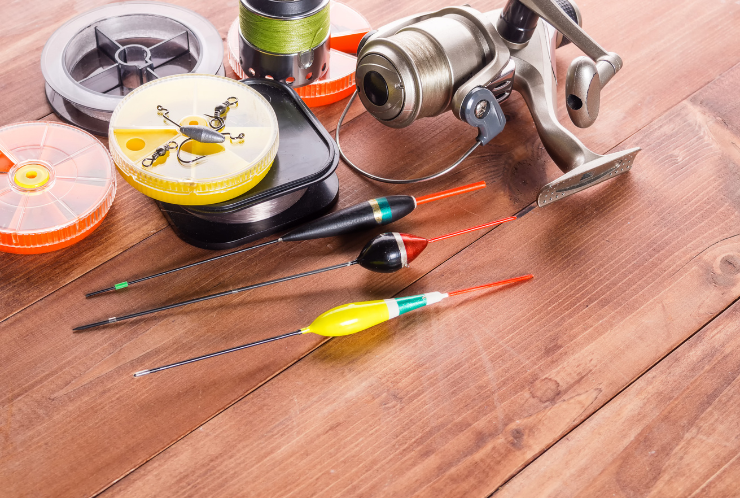
What Is the Best Line for Inshore Fishing?
When fishing inshore, we suggest using a light, thin line. That is where the braided line shines. In addition, we recommend it for fishing in flats, mangroves, marshes, or simply along the coast.
Many people make the mistake of using a thin mono line, which is excellent for a trophy fish but not so perfect for being inshore. Light braided lines allow anglers to cast more accurately and much further, which is essential in Southwest Florida as fish around here are often scared and wary.
Another essential benefit of a braided line is that it causes fewer wind knots and is stealthier by creating fewer vibrations in the water, which fish can sense and get scared of. In addition, it doesn’t stretch, and being thinner allows more lines to fit on the reel. Many people might wonder if it’s strong enough, and the answer is yes. You only need a ten or 15-lb line, and you can haul in a giant fish. The braided line’s benefit is that it is the newest technology, and manufacturers keep improving it. We should point out one negative aspect of the braided line – the knot strength. The knot is essential, so we recommend the Palomar knot, which is probably the best one.
Which Brand of Fishing Line Is the Strongest?
The strength of a line is an essential factor to consider, as it can make the difference between landing a big catch and going home empty-handed. If you choose a line that lacks strength, chances are it will break when you need it the most. This is because the strength of the line is not only determined by its weight but also by its ability to withstand abrasion against a rock or even the side of a vessel.
As far as maximum strength is concerned, we’ve discovered that the SpiderWire Stealth Blue Camo-Braid does exceptionally well. It’s incredibly durable, makes casting easy, and blends well with the water. In addition, due to its unique blue color, this brand line camouflages beautifully in rivers and lakes, preventing you from being noticed.
In addition to that, another excellent fishing line is the Berkley Trilene XL because it is strong, adaptable, and delicate all at once. Though it does not have all the fanciest features, it compensates by offering incredible quality, versatility, and value. Furthermore, it is suitable for both freshwater and saltwater.
Another favorite is the KastKing Superpower Braided line. It’s solid and sensitive, so you can almost immediately detect when a fish bites. This line has great casting distance and excellent abrasion resistance. Its smaller diameter makes it ideal for long hikes where you want to carry as little weight as possible.
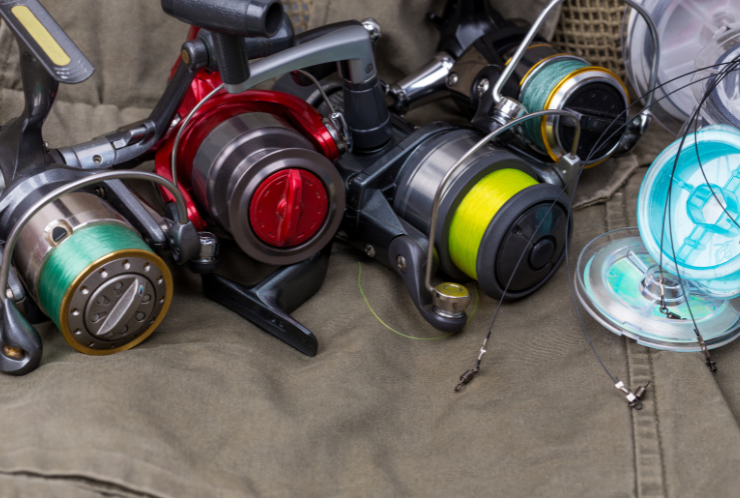
Does the Color of Your Fishing Line Matter?
If you’re a beginner angler, you may wonder what color fishing line you should choose and whether it makes a difference. Although fluorocarbon lines are almost invisible and remarkable for clear waters, you can select different colored lines based on the environment you plan to fish in. Let’s go over some examples below:
- Clear fishing line – Ideal for waters with clear visibility and bright sunlight. No matter what depth it is, it remains clear.
- Pink fishing line – Suitable for all types of water and environments. As it descends below 10 feet, it becomes clear.
- Yellow fishing line – Useful in murky waters and in any weather condition. It becomes clear at depths below 15 feet.
- Blue fishing line – Great for clear saltwater and sunny days. It becomes clear at depths below 15 feet.
- Green fishing line – Works best in water stained with algae and is helpful in any weather conditions. As the depth deepens, it becomes darker.
- Red fishing line – An excellent choice for dirty water. Whenever the depth reaches 15 feet or more, the line becomes black.
Stop at the Port Sanibel Marina for Your Fishing Line
Fishing is one of the most enjoyable family activities, and choosing the right type of fishing line is the key to a successful trip. Whether you’re a pro or a beginner who needs assistance, Port Sanibel Marina is your one-stop shop. They offer a wide range of fishing line types and even have some of the best fishing rods available, in case you start from scratch.
If you’re looking for an even more unforgettable experience, Port Sanibel Marina offers boat rentals and charters for those who wish to try their luck in the deep waters. So are you ready to get started? Stop by the marina’s store, stock up on fishing supplies, and prepare for your next big catch.











